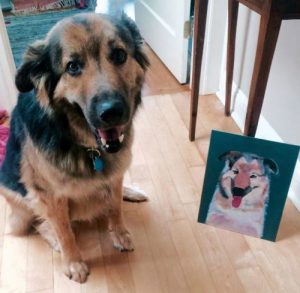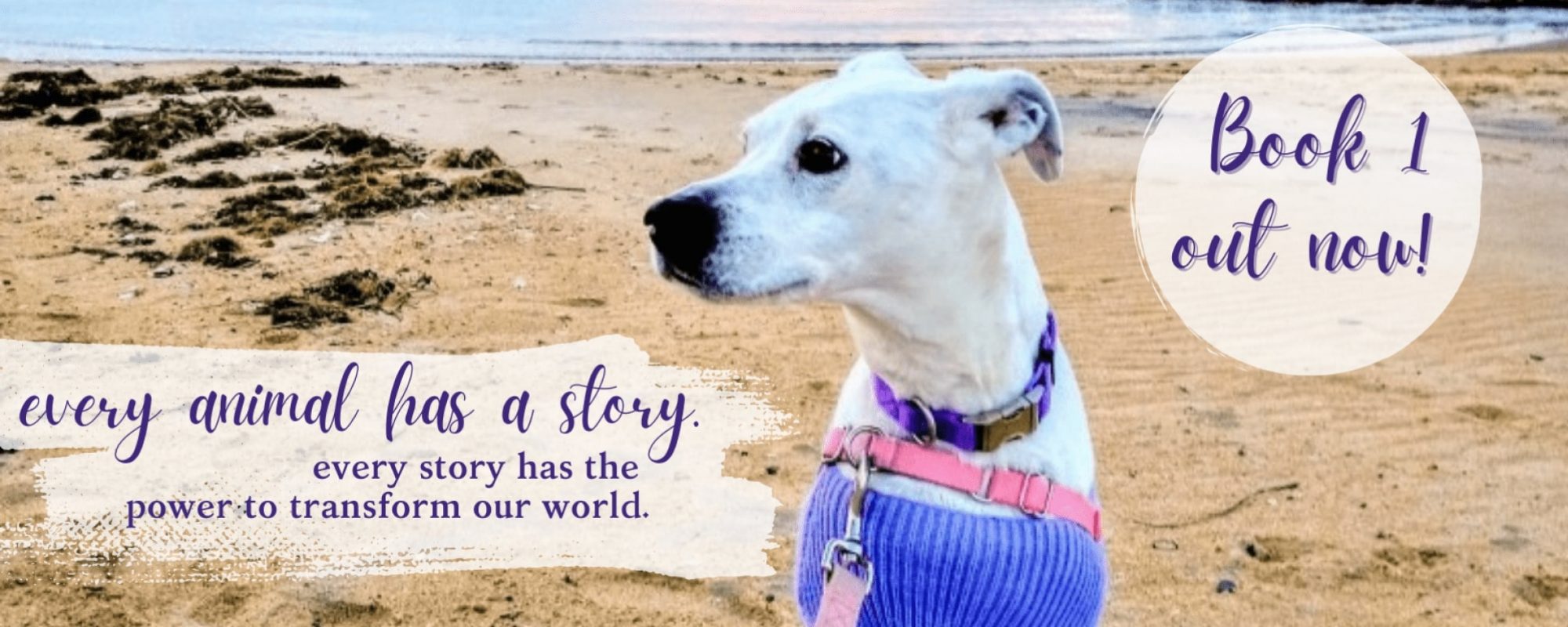(By Laura Lee Cascada / Photographs by Annie Blumenfeld)

Meet Teddy. Four years ago, he bounded into Connecticut teen Annie Blumenfeld’s life and changed it forever. Now, in 2016, Teddy spends his days watching chickens and roosters peck around the neighborhood, eagerly awaiting his next adventure with each walk and car ride. He lives a life of luxury, preferring to take his water from a glass–with plenty of ice cubes, thank-you-very-much.
But before his happily-ever-after, Teddy’s story was bleak. In a shelter in Texas, this shaggy, tail-wagging dog was slated to be euthanized because he had tested heartworm-positive, plagued with a serious parasitic infection of the heart, lungs, and surrounding vessels–all because somewhere along the way, he hadn’t received a simple monthly preventative. As the cost of treating heartworm disease can range from $600 to $2,000 (compare that with the cost of prevention, often equalling out to just a few cups of coffee each month), the only option for many overwhelmed, underfunded shelters like Teddy’s is a final, irreversible one: death.
Fortunately, just days before that fateful walk, Teddy was scooped up by Houston Shaggy Dog Rescue (warning: click the link, and be prepared to be overwhelmed with adorable pictures of furry mops with bright pink tongues and barely-visible eyes). His treatment began right away: over a month of cage confinement as an arsenic-based poison flowed through his system. As dying heartworms are dislodged from the heart area, excessive movement can cause fatal blockages of arteries. So dogs must remain still, giving their bodies time to break down the parasites. This treatment period can be grueling, leaving dogs feeling lethargic, feverish, and coughing. But Teddy survived it.
Now, meet Annie. When she learned of the painful process Teddy had to go through before he could join his loving family, her heart broke. Annie did some research and found out that animals with heartworm disease rarely stand a chance in shelters because of the high cost and length of treatment. Around that time, a piece of her art, a painting of a sheepdog, was featured in a local art show. There, a woman approached her and asked to buy the piece–and if she could paint other dogs. The wheels of 14-year-old Annie’s clock started turning. She became a teen on a mission.
 Annie thus founded Wags 4 Hope, a 501(c)(3) organization dedicated to spreading awareness of heartworm disease and relieving the burden of shelters’ veterinary bills. To fulfill her mission, Annie sells custom-painted portraits of dogs, cats, and even the occasional pig and then donates the proceeds to shelters and rescue groups all over the world. And to help spare other dogs from the horrors that her dog, Teddy–and others who are not so lucky–endured, she speaks out about the importance of heartworm prevention in big and small ways.
Annie thus founded Wags 4 Hope, a 501(c)(3) organization dedicated to spreading awareness of heartworm disease and relieving the burden of shelters’ veterinary bills. To fulfill her mission, Annie sells custom-painted portraits of dogs, cats, and even the occasional pig and then donates the proceeds to shelters and rescue groups all over the world. And to help spare other dogs from the horrors that her dog, Teddy–and others who are not so lucky–endured, she speaks out about the importance of heartworm prevention in big and small ways.
Her efforts recently paid off in one gigantic way at the Connecticut State Capitol, where Annie worked with lawmakers and rallied citizens for over a year to pass H.B. 5422, a bill that would add a checkbox onto Connecticut’s dog-licensing application for guardians to indicate whether their dog is on heartworm prevention. While not mandating the use of a heartworm preventative, the bill aimed to raise awareness of the disease and prompt guardians to look into this easy step to protect their dogs.
On the first go-round, the bill failed to pass. But Annie persisted with Teddy and hundreds of citizens by her side, and Connecticut became the first state with a heartworm awareness message on its dog license form. The Department of Agriculture ordered 100,000 copies of the form, which is available statewide and online. Annie has now set her sights even higher, hoping that other states will follow suit.
Annie has now set her sights even higher, hoping that other states will follow suit.
Today, after four years, Wags 4 Hope’s art continues to make waves and raise money for shelter animals online, where its Facebook page has garnered over 6,000 likes (help it get to 7,000!). Annie’s even recently launched a line of chic clothing featuring her artwork in partnership with Vida. You can become a part of Annie’s vision by visiting the Wags 4 Hope website and supporting her work.
In the meantime, Teddy’s story marches on, proving day after day that one dog–and his inspirational human–can change the world.


